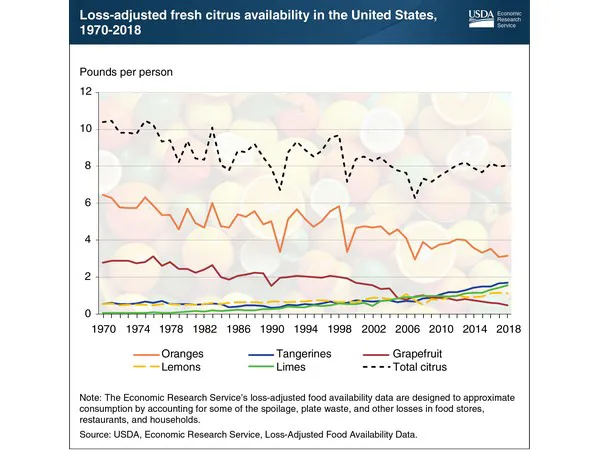In 2018, the total supply of fresh citrus fruits available for Americans to eat—after adjusting for spoilage, plate waste, and other losses in food stores, restaurants, and households—was 8.0 pounds per person. From 1970 to 2018, loss-adjusted per person availability of oranges and grapefruit fell by 51 and 84 percent, respectively, while availability of other citrus fruits grew—lemons, for example, doubled; limes increased by 22 times.

Year-to-year changes in availability of citrus fruits reflect production swings due to weather events, citrus diseases, changes in import or export volumes, and other factors. Longer term trends, however, are usually driven by changes in consumer demand. For example, skipping breakfast—or making it a “grab and go” meal—is likely to reduce demand for fresh oranges and grapefruit. Grapefruit takes more effort to eat, especially when compared with easy-to-peel citrus fruits such as tangerines that are sweet in taste and smaller in size.
The popularity of Hispanic, Asian, and other cuisines that use lemons and limes could be contributing to higher demand for these fruits. This chart appears in ERS’s Amber Waves article, “Citrus Fruits Accounted for 14 Percent of Fresh Fruits Available for Americans to Eat in 2018,” August 2020.
Source: USDA
